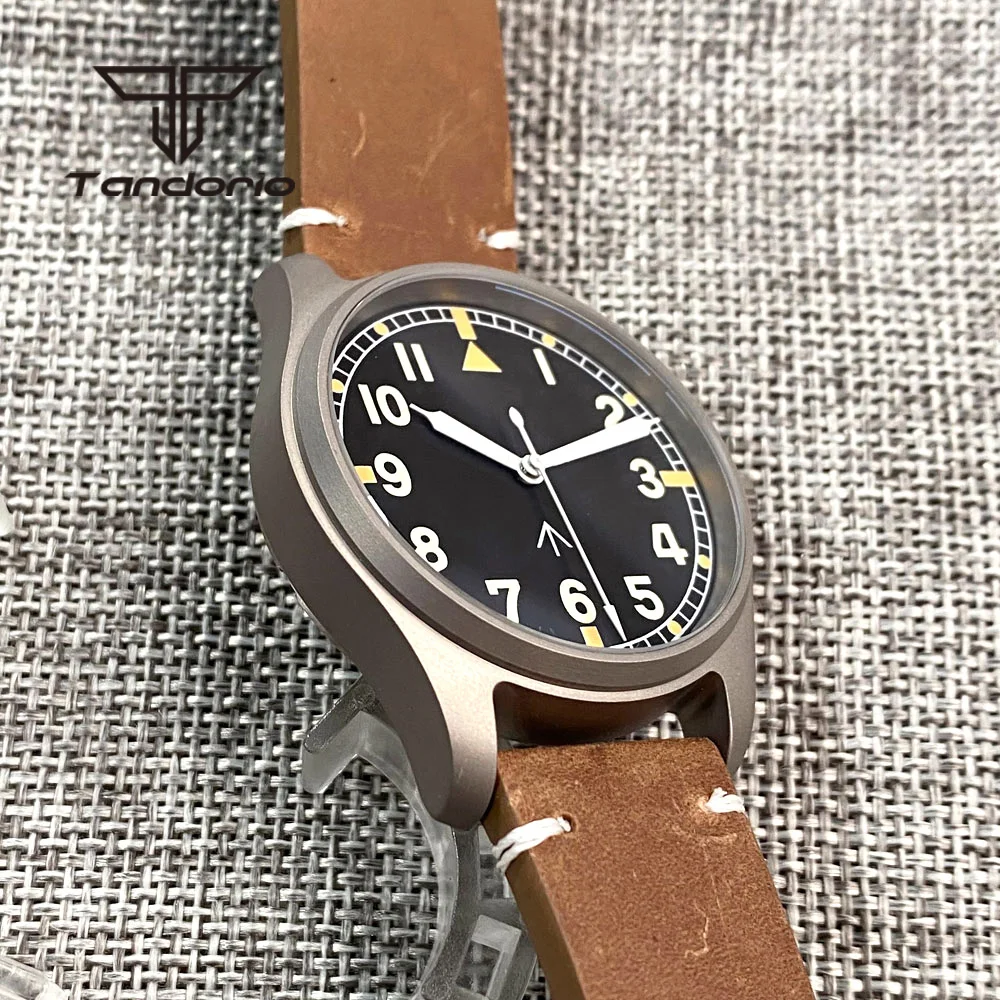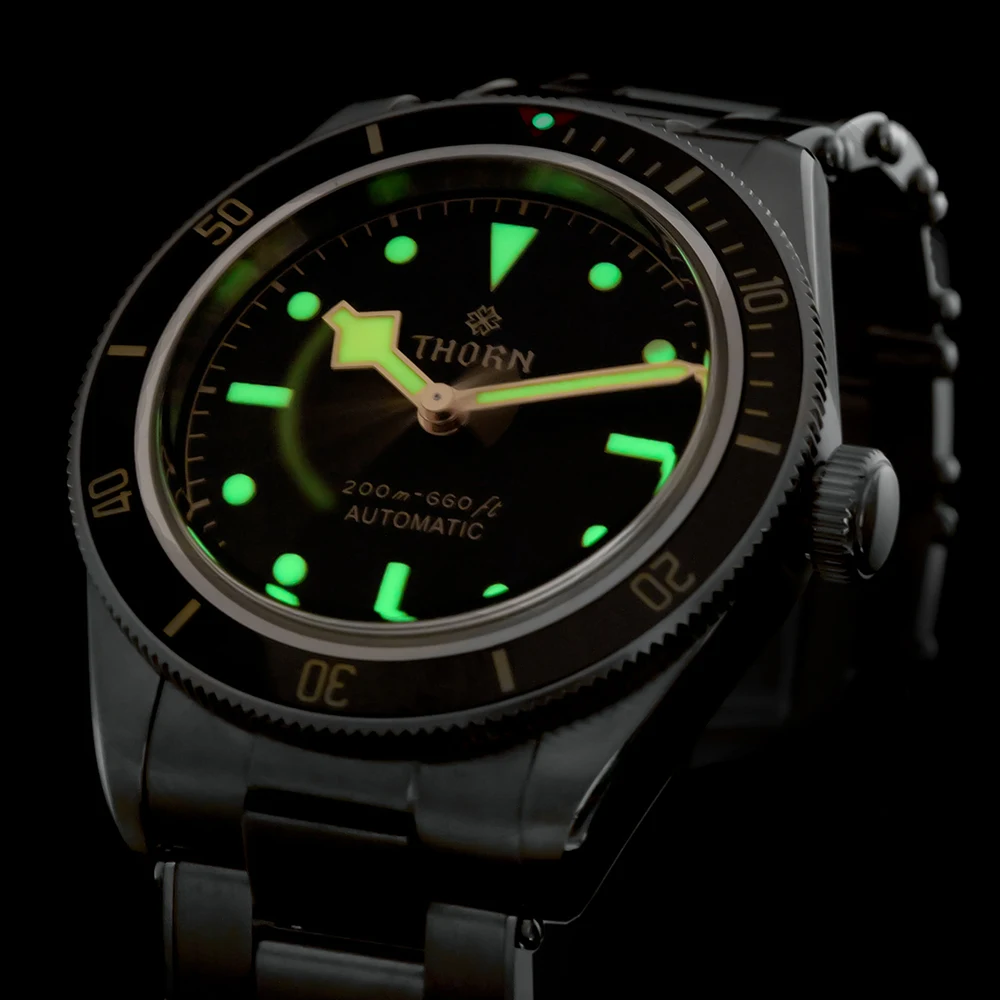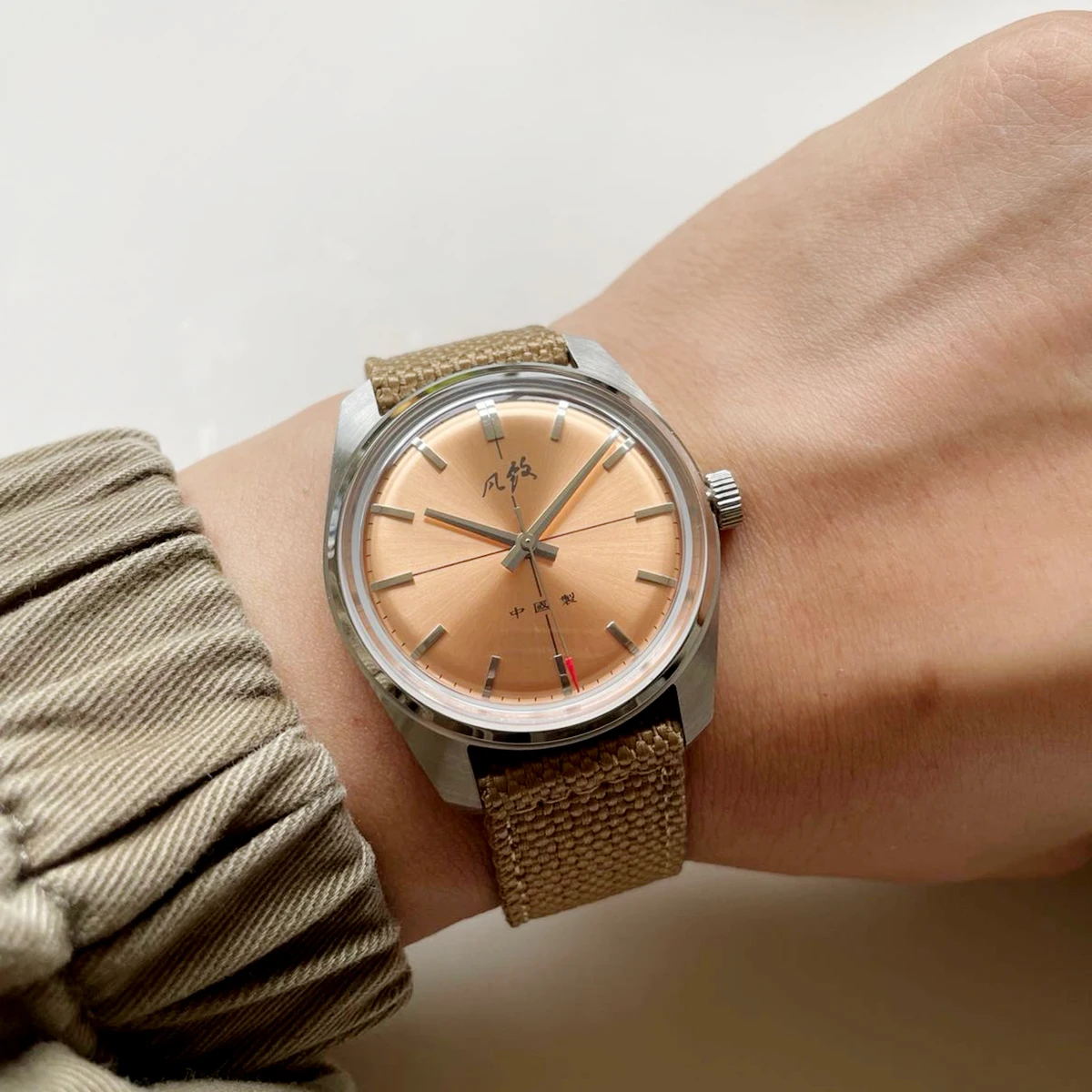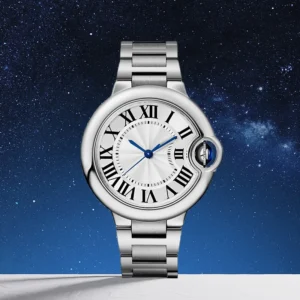Watch enthusiasts often debate about various aspects of timepieces, but one factor consistently affects the daily wearing experience: case thickness. The relationship between a watch’s case thickness and comfort is profound yet often overlooked in favor of more visible features like dial design or complications.
In recent years, the watch industry has witnessed a strong trend toward slimmer profiles. This shift represents more than just aesthetic preference—it fundamentally changes how a watch feels on the wrist throughout the day. What began with the transition from pocket watches to wristwatches has evolved into a quest for increasingly refined, sleek timepieces that balance function with wearability.
This comprehensive guide explores the multifaceted relationship between case thickness and comfort, covering physical ergonomics, aesthetic considerations, and practical implications. Whether you’re considering your next purchase or simply curious about watch design principles, understanding this relationship will enhance your appreciation of fine timepieces.
By the end of this article, you’ll understand:
* How the watch industry defines and measures “thinness”
* The physical and practical advantages of thinner watch cases
* How case thickness interacts with other dimensions to affect comfort
* When thinner isn’t necessarily better for every wearer
The evolution of thin case design in modern watches has transformed our expectations of what constitutes a comfortable timepiece, making this analysis particularly relevant for today’s discerning watch collector.
What Makes a Watch Case “Thin”? Industry Standards and Perspectives
The definition of a “thin” watch case varies across different segments of the horological world. While there’s no universal standard, the watch industry generally categorizes thickness along these approximate lines:
| Category | Thickness Range | Typical Examples |
|---|---|---|
| Ultra-thin | Under 7mm | Dress watches, formal timepieces |
| Thin | 7-10mm | Dress watches, simple automatics |
| Standard | 10-13mm | Sports watches, basic chronographs |
| Thick | Over 13mm | Dive watches, complex chronographs |
It’s important to note that “thinness” is relative to a watch’s overall dimensions and category. A 12mm dive watch might be considered remarkably thin for its category, while a 10mm dress watch would be considered rather thick. Context matters significantly.
Different watch types naturally have different thickness benchmarks. Dress watches traditionally aim for the thinnest possible profile to slide easily under shirt cuffs, while tool watches like divers often require additional case thickness to accommodate greater water resistance and protective features.
The perception of thinness has also evolved over time. Watches that would have been considered remarkably thin fifty years ago might seem standard or even thick by today’s standards, thanks to advances in movement technology and case manufacturing techniques. Understanding these definitive watch case thickness comparisons helps put modern timepieces in proper perspective.
The Physical Comfort Advantages of Thin Watch Cases
The most immediate benefit of a thin watch case is the significant reduction in weight. This lighter presence on the wrist translates to reduced fatigue during all-day wear, particularly important for those who use their hands extensively throughout the day. Many wearers report “forgetting” they’re wearing an ultra-thin timepiece—perhaps the ultimate compliment to comfort.
Thin cases also sit more flush against the wrist, creating a more natural, integrated feel. This lower profile allows the watch to:
- Move more naturally with wrist articulation
- Reduce interference with hand and arm movements
- Minimize impact against objects in your environment
- Decrease pressure points during extended wear
The psychological comfort of wearing a less obtrusive timepiece shouldn’t be underestimated either. A watch that doesn’t constantly remind you of its presence through bumping, snagging, or weight creates a more relaxed wearing experience.
For active individuals, thin watches provide tangible benefits during exercise or sports, where a bulky watch might restrict movement or become distracting. Even for office workers, the benefits of slim watch cases become apparent when typing, writing, or performing other desk-based tasks without a thick timepiece hitting against the desk or keyboard.
Wardrobe Integration and Aesthetic Comfort
Beyond physical comfort, thin watch cases offer significant advantages when it comes to wardrobe integration. The ability to easily slip under shirt cuffs and tight sleeves represents a practical benefit that affects daily wear. A slim timepiece eliminates the awkward bunching of fabric around a thick watch case or the constant need to adjust your sleeve throughout the day.
Thin watches also dramatically reduce snagging on clothing, pockets, and other materials. This not only protects your garments from potential damage but also prevents the jarring sensation of your watch catching on fabric—a small but meaningful contribution to overall comfort.
There’s also a dimension of what might be called “social comfort”—the understated elegance that comes with a slim timepiece. In formal or professional settings, a watch that sits discreetly on the wrist projects sophistication without ostentation. Ultra-thin formal watches embody this principle perfectly, complementing formal attire without competing with it.
The versatility of thin watches extends across different settings and occasions. Whether paired with casual weekend wear or formal business attire, a slim timepiece adapts to various contexts, creating a seamless transition between different environments. This adaptability is why many collectors choose thin automatic dress watches as their primary everyday timepieces.
The Critical Relationship Between Case Thickness and Other Dimensions

Case thickness doesn’t exist in isolation—it works in concert with other dimensions to determine overall comfort. A thin case paired with an excessive diameter can still create an uncomfortable wearing experience, while a moderately thick case with well-designed proportions might wear surprisingly comfortably.
The relationship between diameter and thickness is particularly important. Consider two watches with identical 8mm thickness:
* On a 36mm diameter watch, 8mm creates a balanced, proportional feel
* On a 45mm diameter watch, 8mm might feel too thin, creating an unbalanced “dinner plate” effect on the wrist
Equally critical is the lug-to-lug measurement—the distance across the watch from one end of the lugs to the other. This dimension determines how the watch sits across the top of your wrist. A watch with a shorter lug-to-lug measurement and moderate thickness often wears more comfortably than an ultra-thin watch with overextended lugs that hang over the edges of your wrist.
The height-to-diameter ratio (sometimes called the “aspect ratio”) significantly influences how a watch is perceived on the wrist. Watches with balanced proportions tend to offer the best wearing experience, regardless of their absolute thickness. When comparing thin versus thick watch case profiles, this relationship becomes particularly evident.
Case Shape and Ergonomics: Beyond Just Millimeters
Raw thickness measurements tell only part of the comfort story. The shape and design of a case profoundly impact how it feels on the wrist, sometimes more so than its absolute dimensions.
Case back design plays a crucial role in comfort:
* Flat case backs sit well on larger, flatter wrists
* Curved or domed case backs conform better to rounded wrists
* Recessed case backs place the heaviest components (the movement) closer to the wrist, improving stability
Lug curvature determines how the watch conforms to the wrist’s natural curvature. Well-designed lugs that curve downward create a snug fit regardless of case thickness, while straight lugs might cause even a thin watch to sit awkwardly with gaps between the watch and your wrist.
Edge finishing significantly influences comfort as well. Sharp, unfinished edges on an otherwise thin case can dig into the skin, while softly rounded edges on a slightly thicker case might feel much more comfortable. This attention to detail often separates truly comfortable watches from those that merely have impressive specifications on paper.
Crown design and positioning also interact with case thickness to affect overall comfort. A large, protruding crown on a thin case might defeat the purpose by digging into the back of your hand, while a recessed or thoughtfully positioned crown preserves the comfort benefits of a slim profile. Understanding these watch features helps identify timepieces designed with genuine ergonomic consideration, such as those found in minimalist automatic watches.
Material Considerations: Weight and Sensation Against the Skin

The material of a watch case dramatically affects comfort, especially in relation to thickness. The same dimensions in different materials create vastly different wearing experiences:
Titanium stands out as exceptionally comfortable for thin watches. At approximately 40% lighter than stainless steel, titanium significantly reduces the weight while maintaining strength. A 9mm titanium case might feel lighter than a 7mm steel case, making titanium automatic watches particularly comfortable for all-day wear.
Beyond weight, materials vary in their thermal conductivity—how quickly they absorb and transmit heat from your body. Materials that quickly reach body temperature (like titanium) feel more comfortable against the skin than those that remain cool longer (like steel), creating a more “integrated” feeling with the wearer.
Different materials also affect the balance and weight distribution of a watch. A thin case made from a denser material might actually improve stability on the wrist compared to an ultra-thin case that feels too insubstantial and prone to shifting position.
The finishing techniques applied to case materials also influence skin contact comfort. High-polish finishes can sometimes create a “stickier” sensation against skin during perspiration, while brushed or satin finishes often feel more comfortable in warm weather or during activity.
Classic Automatic Dress Watches, Day Date Automatic Watches, Perpetual Calendar Automatic Watches
Price range: $540.60 through $574.60 Select options This product has multiple variants. The options may be chosen on the product pageClassic Automatic Dress Watches, GMT Automatic Watches, GMT Pilot Watches
Price range: $1,240.86 through $1,463.33 Select options This product has multiple variants. The options may be chosen on the product pageAutomatic Chronograph Watches, Classic Style Dive Watches
$3,053.06 Select options This product has multiple variants. The options may be chosen on the product pageBronze Automatic Watches, Military Inspired Automatic Watches, Professional Spec Dive Watches
Price range: $1,442.21 through $1,442.82 Select options This product has multiple variants. The options may be chosen on the product pageClassic Automatic Dress Watches, Thin Automatic Dress Watches
$437.64 Select options This product has multiple variants. The options may be chosen on the product pageProfessional Spec Dive Watches, Titanium Automatic Watches
$574.74 Select options This product has multiple variants. The options may be chosen on the product page
The Strap Factor: Completing the Comfort Equation
Even the thinnest, most ergonomic watch case can be undermined by a poor strap choice. The strap or bracelet is not merely an attachment system but an integral part of the overall comfort equation.
Proportion between case and strap thickness is essential for balanced comfort. A paper-thin strap paired with even a moderately thin case creates an imbalanced feel, while an overly thick strap with an ultra-thin case looks and feels disproportionate. The best combinations maintain consistent proportions throughout the entire watch.
Strap flexibility significantly affects how a thin watch wears. Key considerations include:
* Material pliability that allows the strap to conform to wrist contours
* Break-in period required to achieve optimal comfort
* Seasonal appropriateness (leather for cooler months, perforated or fabric options for warmer weather)
* Elasticity and stretch over time
The attachment method between strap and case—the lugs and spring bars—plays a crucial role as well. Integrated straps or well-designed lug systems that eliminate gaps enhance the comfort benefits of a thin case. Many classic automatic dress watches feature thoughtfully designed strap systems that complement their slim profiles.
Potential Comfort Trade-offs with Ultra-Thin Watches
While thin watch cases offer numerous comfort advantages, extremely slim timepieces may present certain trade-offs worth considering.
Some wearers report a psychological discomfort stemming from perceived fragility. Ultra-thin watches, regardless of their actual durability, can sometimes feel too delicate for confident daily wear. This concern may be particularly relevant for active individuals or those working in environments where impacts are likely.
Extremely thin cases sometimes create an insubstantial feeling that some wearers find unsettling. The reassuring presence of a watch with some heft can be part of the wearing experience, and ultra-thin models might feel too ethereal for those accustomed to more substantial timepieces.
Technical considerations also arise with extreme thinness. Water resistance typically decreases as cases become thinner, potentially limiting versatility in different environments. Similarly, shock resistance may be compromised in the pursuit of minimal thickness.
Movement weight relative to case thickness can create balance issues in some ultra-thin designs. A heavy automatic movement in an extremely thin case might make the watch top-heavy, causing it to shift position more frequently on the wrist during movement.
These considerations highlight why creating exceptional ultra-thin watches involves overcoming significant design challenges in precision watchmaking. The finest examples manage to minimize these trade-offs while maximizing the benefits of reduced thickness.
Comparing Comfort: When Might a Thicker Case Be Preferred?

While thin cases offer many comfort advantages, certain scenarios and preferences might favor thicker timepieces. Understanding these situations provides a balanced perspective on the thickness question.
Wrist size and shape significantly influence optimal case thickness. Larger wrists often accommodate—and sometimes benefit from—thicker cases that might appear disproportionate on smaller wrists. The visual balance between wrist size and watch dimensions contributes to both aesthetic and psychological comfort.
Some wearers genuinely prefer the substantial feeling of a thicker watch. This preference isn’t merely about aesthetics—it’s about the reassuring presence and weight that communicates quality and durability to the wearer. For these individuals, an ultra-thin watch might actually feel less comfortable despite its reduced physical presence.
Functional requirements sometimes necessitate greater thickness:
* Enhanced water resistance for swimming or diving
* Additional shock protection for active lifestyles
* Complications that require more movement height
* Increased power reserve mechanisms
Seasonal and clothing considerations also influence thickness preferences. Many enthusiasts rotate to slightly thicker watches in winter months when worn under heavier clothing, then transition to thinner pieces in summer when wearing lighter garments. Specialized timepieces like automatic dive watches demonstrate how purposeful thickness can provide specific benefits in certain contexts.
Practical Guidance: Finding Your Ideal Case Thickness for Maximum Comfort
Finding your perfect case thickness involves personal assessment rather than following generic recommendations. Consider these practical steps when evaluating what works best for your comfort:
First, assess your wrist shape, not just size. Flatter wrists generally accommodate a wider range of thicknesses, while more rounded wrists often benefit from thinner cases or those with curved case backs. The distribution of your wrist width also matters—some wrists are oval rather than round, affecting how different case thicknesses sit.
When trying on watches, conduct this simple comfort test:
1. Wear the watch for at least 15 minutes
2. Perform typical daily movements (typing, reaching, handshakes)
3. Check for pressure points or areas where the watch edge digs in
4. Rotate your wrist fully to ensure the case doesn’t impede movement
5. Notice if you find yourself frequently adjusting the watch position
Consider your typical wardrobe when selecting case thickness. If you frequently wear dress shirts with fitted cuffs, a thinner profile will integrate more seamlessly with your clothing. For those who rarely wear cuffed shirts, this factor becomes less critical.
If transitioning from typically thick watches to thinner models, allow an adjustment period. Many wearers need time to adapt to the different sensation, just as someone might need to adjust when switching from heavy boots to lightweight shoes.
When identifying the perfect dress watch, case thickness should be a primary consideration, not an afterthought. Many connoisseurs appreciate manual wind dress watches specifically because their lack of an automatic rotor allows for thinner case profiles without sacrificing mechanical craftsmanship.
Conclusion: Balancing Form and Function in Watch Case Design
Thin watch cases offer undeniable comfort advantages for many wearers—reduced weight, improved wrist articulation, better wardrobe integration, and a less obtrusive presence throughout daily activities. Yet comfort remains deeply personal, influenced by individual preferences, wrist anatomy, lifestyle needs, and even psychological factors.
The ideal approach to case thickness balances objective ergonomic principles with subjective comfort preferences. Rather than pursuing thinness as an absolute virtue, consider it one factor in a holistic comfort equation that includes case diameter, lug design, material choice, and strap selection.
The watch industry continues to push boundaries in thin watch profile design trends, with remarkable innovations in slim watch movement engineering enabling ever-thinner cases without sacrificing reliability or functionality. These advances give today’s watch enthusiasts unprecedented options for finding their ideal balance of form and function.
Ultimately, the most comfortable watch is one that feels like a natural extension of yourself—present when you want to appreciate it, yet unobtrusive when your focus is elsewhere. Whether that means an ultra-thin dress piece or a slightly thicker everyday watch depends on your unique preferences and lifestyle.







